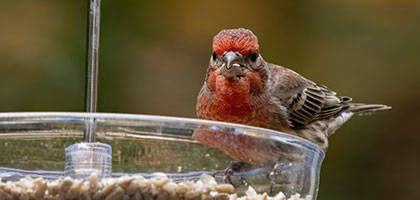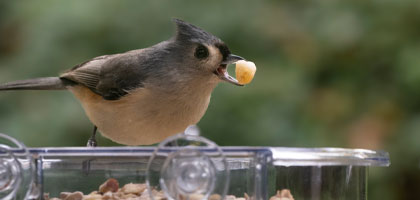Bird feeders are a delight for bird enthusiasts. They attract a variety of wild birds, offering a close-up view of their behaviors.
However, bird feeders can also attract unwanted visitors. Cats, both domestic and feral, are known to prey on birds at feeders.
This poses a significant threat to wild bird populations. It's a concern for homeowners, pet owners, and wildlife conservationists alike.
So, what is the best way to keep cats off bird feeders? This is a question that requires a thoughtful and multi-faceted approach.
In this guide, we'll explore effective strategies to deter cats from bird feeders. We'll discuss everything from feeder placement to innovative deterrents.
Our goal is to help you create a safe feeding environment for wild birds. Let's dive in and explore how to keep our feathered friends safe from feline predators.
Understanding the Predatory Nature of Cats and Their Impact on Wild Birds
Cats are natural predators, driven by instincts to hunt. This predatory behavior can severely impact local bird populations.
When a cat spots a bird, its instinct to chase and catch takes over. Bird feeders, rich with activity, become alluring targets for curious felines.
The presence of cats near feeders disrupts feeding patterns. This makes birds hesitant, reducing the feeders' effectiveness.
Moreover, even well-fed cats can cause harm. They hunt as a form of play, not always out of hunger.
Understanding this behavior is crucial. It helps us craft effective deterrent strategies, ensuring wild birds can feed safely.
The Importance of Bird Feeder Placement
The placement of your bird feeders is crucial in keeping cats at bay. Strategic positioning can deter cats from reaching them.
Elevate feeders out of feline jumping range. Aim for a height that challenges even the most agile cat.
Consider these factors when choosing a spot:
- Position feeders away from trees or tall structures.
- Keep them at least ten feet from bushes or fences.
- Avoid placing feeders near any potential cat hiding spots.
An ideal location not only protects birds but also ensures they feel secure while feeding. Proper placement benefits both birds and enthusiasts alike.
Utilizing Baffles and Guards to Deter Cats
Baffles and guards are practical tools to protect bird feeders from cats. These devices prevent cats from climbing poles to reach the feeders.
Install baffles in a cone or dome shape to effectively block feline advances. Baffles create a physical barrier that discourages climbing efforts. With these in place, the safety of your wild bird feeder significantly improves, allowing birds to feed undisturbed.
Creating a Cat-Free Zone with Plants and Barriers
Creating a cat-free zone around bird feeders helps protect wild birds. Use natural barriers that deter cats from approaching the area. Prickly or thorny plants can be effective in keeping cats away.
Consider using barriers that are both decorative and functional. Ground covers like holly or rose bushes work well as they create an unfriendly environment for cats. These barriers, when combined with strategic feeder placement, make it difficult for cats to access the feeders.
A cat-free zone should also be maintained regularly. Keeping the area clean discourages cats from lingering. Here are some plants and barriers to consider:
- Thorny bushes like rose or holly
- Prickly ground covers such as barberry
- Decorative fences or trellises
- Natural scents that deter cats, like citrus peels
Innovative Deterrents: Motion-Activated Sprinklers and Ultrasonic Devices
Motion-activated sprinklers offer an unexpected method of keeping cats away. When a cat approaches, the sprinkler releases a harmless burst of water, startling the intruder. This surprises the cats and quickly discourages them from returning to the area.
Ultrasonic devices emit sounds that are unpleasant to cats but inaudible to humans. These devices deter cats effectively without causing harm. Both options offer humane and environmentally friendly ways to keep bird feeders safe from cat interference.
Keeping Your Pet Cat Indoors: A Safe Solution for All
Keeping your cat indoors not only protects wild birds but also safeguards your pet from outdoor dangers. This simple solution ensures your cat doesn't disturb the bird feeders while reducing the risk of getting lost or harmed.
If allowing your cat outside is essential, consider supervised play or creating an enclosed outdoor space known as a 'catio.' This setup lets your cat enjoy the outdoors without posing a threat to wild bird feeders.
The Role of Bell Collars and High-Frequency Sound Emitters
Bell collars are popular for reducing cats' hunting success by alerting birds to their presence. However, some argue that cats can adapt, minimizing the collar's effectiveness. Despite this, it remains a simple tool to try for concerned bird lovers.
High-frequency sound emitters act as a humane deterrent by emitting sounds unpleasant to cats but inaudible to humans. These devices can be strategically placed near wild bird feeders to discourage feline approaches without causing harm.
Regular Maintenance: The Key to a Safe Feeding Environment
Consistent maintenance of bird feeders is essential to reduce attracting cats. Clearing spilled seeds and debris regularly keeps the feeding area tidy and less appealing to felines. This practice also discourages other unwanted animals that might attract cats.
Additionally, cleaning feeders protects wild birds from diseases that thrive in dirty conditions. Regular inspections ensure deterrents like baffles and guards remain effective. A well-maintained setup supports a safe and welcoming environment for all visiting birds.
Legal and Ethical Considerations in Protecting Wild Birds
Laws vary on managing cats and protecting birds. In some regions, free-roaming cats are subject to specific regulations. Familiarize yourself with local wildlife protection laws to ensure compliance when implementing deterrents.
Ethically, it's important to use humane methods. Deterring cats should not cause harm to the animals. Combining legal and moral guidelines helps balance bird conservation with feline welfare, fostering coexistence between pets and wildlife.
Community Involvement and Education: A Collective Effort
Engaging the community is crucial in protecting wild birds from cats. Neighbors can coordinate efforts to keep cats indoors or supervised. Sharing tips and strategies strengthens overall bird conservation actions.
Education raises awareness about the impact of cats on bird populations. Host workshops or informational sessions to teach humane deterrent methods. A well-informed community fosters a safe environment for both wild birds and pets.
Alternative Solutions: Catio Spaces, Fencing, and Feeder Designs
Pet owners can consider creating catio spaces for their cats. These enclosed outdoor areas provide stimulation while keeping wildlife safe. Catios allow cats to enjoy the outdoors without risking wild birds at feeders.
Fencing is another effective barrier. It prevents cats from approaching bird feeders directly. Choose styles that cats find difficult to climb or breach.
Innovative feeder designs also play a role in keeping birds safe. Opt for feeders that close under a cat's weight or are suspended from thin wires. Here are some examples:
- Suspended feeders that sway and deter cats
- Weight-sensitive feeders that close when heavy
- Feeders placed on high poles, out of cat reach
Incorporating these alternative solutions can enhance efforts to keep wild birds safe and promote peaceful coexistence with cats.
Conclusion: A Multi-Faceted Approach to Protecting Our Feathered Friends
Protecting wild birds requires a combination of strategies. No single method will suffice. By combining placement, barriers, deterrents, and education, we can effectively safeguard bird feeders from cats.
Every backyard and situation is unique, so experimentation is key. Continuously adapt and refine your approach to ensure the best results. The goal is a harmonious balance between enjoying nature and respecting all creatures involved.






